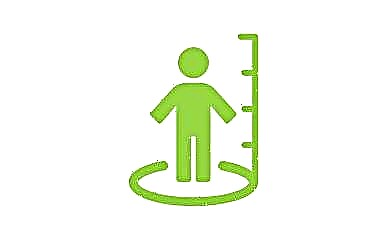With an increase in body temperature in infants, all parents, without exception, face. There can be many reasons for this. Until the age of one month, even 37 is the natural state of the baby. Before you start knocking down the temperature indicator in a child, you should take a closer look at his behavior. If nothing bothers the baby, he sleeps peacefully and eats with appetite, which means that he is completely healthy.

The temperature in a baby should not always bother parents
Reasons for the rise in temperature
Since many systems of the infant's body are not fully formed, the temperature difference is by no means uncommon.
Most often, a child's fever can be explained by one of the following reasons:
- bacterial or viral infections;
- active games;
- stressful situations;
- prolonged crying;
- intestinal diseases;
- allergic reactions;
- stomatitis;
- teething.
In addition to the above, the baby may start to have a fever after being vaccinated. This should not cause fears. As a rule, a one-time intake of an antipyretic agent helps to normalize the indicators.
Infections
An increase in body temperature, often significant (over 38 degrees), is one of the main symptoms of an infection in the body. Infectious diseases in young children are not only common ARVI and influenza, but also diseases such as measles, dysentery, meningitis, whooping cough and some others. If the baby has a fever and there is a suspicion of an infectious disease, it is strongly recommended to immediately call a doctor.

It is worth watching the temperature of the child even without a reason.
Meningitis
At the initial stage, it is almost impossible to diagnose meningitis in a child. Both his behavior and well-being during the incubation period practically do not change. But when the disease enters the next stage, it is unrealistic not to notice it. The baby's temperature rises rapidly. The intense fever begins about an hour after the first symptoms appear. You might think it’s a cold. The baby becomes lethargic, refuses to breast, he has diarrhea, he may shiver, he has a bad headache. The most important thing is that no antipyretic agents will help bring down the temperature. If treatment is started on time, the fever will last no longer than five days.
A bite of an insect
If the baby's temperature began to rise after an insect bite (for example, a mosquito), this is a clear sign of an allergic reaction, even if the skin does not appear red. The baby will feel better if he is given an antipyretic and, in parallel, an allergy medication. The latter is recommended to drink within 5-7 days.
Vaccine reaction
Only a high fever in a child without other symptoms can be attributed to a recent vaccination. Most often this is a normal reaction of the body, and the parents do not have the slightest reason to panic. The reaction to vaccination in the form of fever is explained by the fact that immunity to the injected antigen is successfully formed in the baby's body. In some children, the body after the vaccine "fights" asymptomatically, therefore it is unlikely that it will be possible to predict the reaction.
Temperature 39 at 10 months
At the age of ten months, some babies have a temperature above 39 degrees without additional symptoms. This may be due to banal teething or overheating, but sometimes we can talk about a disease. The most important thing is when a child has a high temperature to correctly determine what it is and start adequate treatment if necessary.

Babies tolerate fever worse than adults
Roseola
Roseola disease has a herpesvirus etymology and occurs in young children quite often. Its first clinical manifestation is fever with an increase in body temperature up to 39-40 degrees. The fever lasts an average of three to five days. When it stops, a pink rash appears on the body. It disappears over time on its own without the need for medication. To make the baby feel better, during a fever, he should be given antipyretic, continuous bed rest and plenty of drink.
Ear infection
If an ear infection develops in a baby, the illness is more likely to accompany an increase in body temperature. There is nothing wrong with that - the baby's body successfully fights against foreign particles. Usually, the temperature with an ear infection lasts only a few days. It is worth starting to worry only if the fever lasts more than a week - with a high degree of probability, a complication begins to develop.
Doctor call
Some parents, if their child has a fever, are in no hurry to see a doctor. In some cases, such a decision turns out to be quite justified - in small children, the body is still weak and can react sharply even to the simplest conditions. If the temperature does not drop for too long, and the child's well-being cannot be called normal, you should consult a doctor immediately. An experienced specialist will quickly determine the cause of the problem and, if necessary, prescribe adequate treatment.
First aid
If the child has a fever, first aid is required before the doctor arrives.

Fever in a child is always an indication for calling doctors
It consists in the following:
- provide the crumbs with a sufficient amount of cool drink;
- maintain the temperature of the air in the room in which it is located at +20 degrees;
- free the baby from the diaper so as not to hinder the heat transfer of the body;
- periodically wipe the child with a napkin moistened with water;
- if the child has increased sweating, do not forget to change his clothes as he gets wet.
These measures will not relieve the fever, but they will also not allow it to intensify.
Temperature 38 per year
If a small child under the age of one year does not have headaches and stomach pains, he feels great, but at the same time there is an increase in temperature, most often the reason is that the baby is overheated, or his teeth have begun to be actively cut.
Overheat
A child can get overheated by being in the heat, the sun or in a poorly ventilated stuffy room for a long time. In addition to fever, a one-year-old baby will feel thirsty, dry mouth, headache and aching pain in the back and limbs. At the same time, he will have difficulty breathing and weakness. In most cases, it will not be difficult to cure the baby - you need to move it to a cool place and drink it. If symptoms such as facial swelling, discoloration of the skin, dilated pupils, muscle cramps are observed, an ambulance should be called immediately.
Temperature without symptoms
A fever without symptoms usually does not last too long.
1-2 days
A single fever above 37 degrees, which lasts from a couple of hours to two days, is called ephemeral by doctors. It appears unexpectedly and just as suddenly disappears for no reason.
In most cases, such a problem can be explained by being in a room with an air temperature above 30 degrees: a sauna, a steam bath or in direct sunlight. Sometimes tight or out of season warm clothing or active play is the cause.
Important! Hyperthermia is especially dangerous for children under one year old. Sometimes the temperature can rise even if the baby is in the "kangaroo", warming up, among other things, from the heat of the mother's body.

You need to bring down the temperature correctly
4 days
A rise in temperature for four days is extremely rare for no reason. Even if no additional symptoms are observed, the reasons may be:
- some infectious diseases in the initial stage;
- exacerbation of chronic diseases;
- pathology in the work of the endocrine system;
- post-traumatic conditions.
In all cases, it is necessary to ensure that the thermometer does not rise above 38.5 degrees. If this still happens, you should not delay with medical help.
How to bring down the temperature correctly
A child should deal with fever correctly.
When the temperature rises above 38.5
Experts recommend the following actions:
- Minimize the baby's motor activity;
- Place him in a crib in a well-ventilated area;
- Never apply ice to his skin;
- Give the child an antipyretic;
- Call a local doctor or ambulance.
Important! Fever is very dangerous for children, whose age is calculated for months, so you should not take it lightly.
Rubdown
Many people wipe their children with vinegar or alcohol, but these methods are not a priority when treating young patients - under certain circumstances, their use can cause poisoning.
The easiest and safest method is to use plain warm water. In this case, after the procedure, it is important to cover the child with a thin sheet.
Antipyretic
Most antipyretic drugs for children come in syrup, suspension, or solution formats. Fluids are better absorbed into the gastrointestinal tract and, therefore, are more likely to enter the bloodstream. As a rule, medicines that are allowed to be given to young children contain ibuprofen or paracetamol in their composition.
The doctor should be called in all situations when the temperature indicators of the child differ from the norm, especially if the crumbs have additional symptoms. If the indicator of the thermometer does not exceed 38 degrees, you can limit yourself to a visit to the pediatrician, if 39-40 - it should be an ambulance. The sooner it is called, the better.



